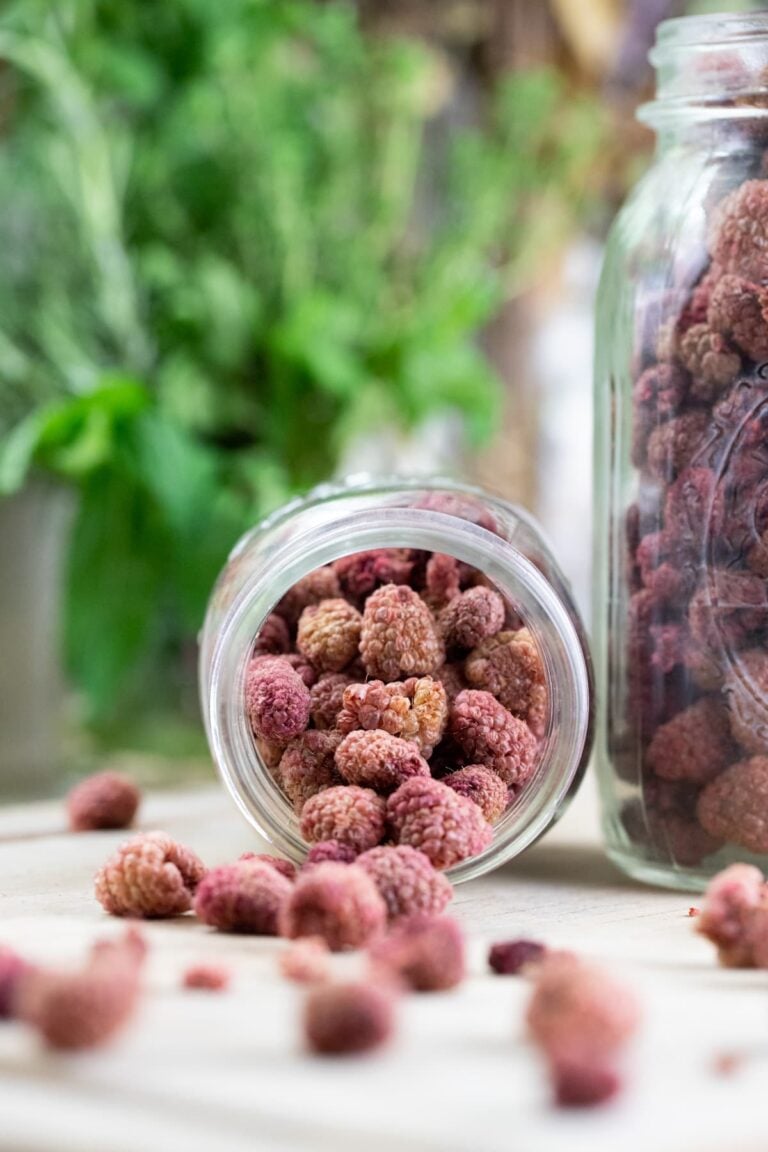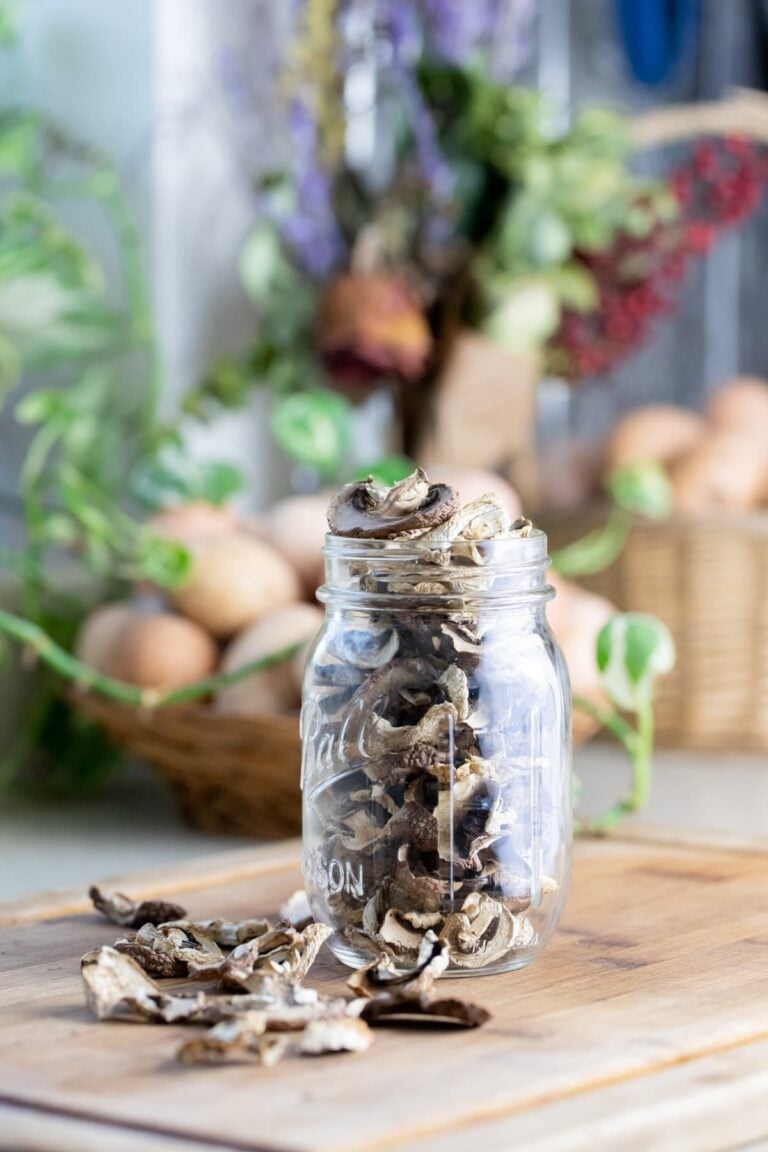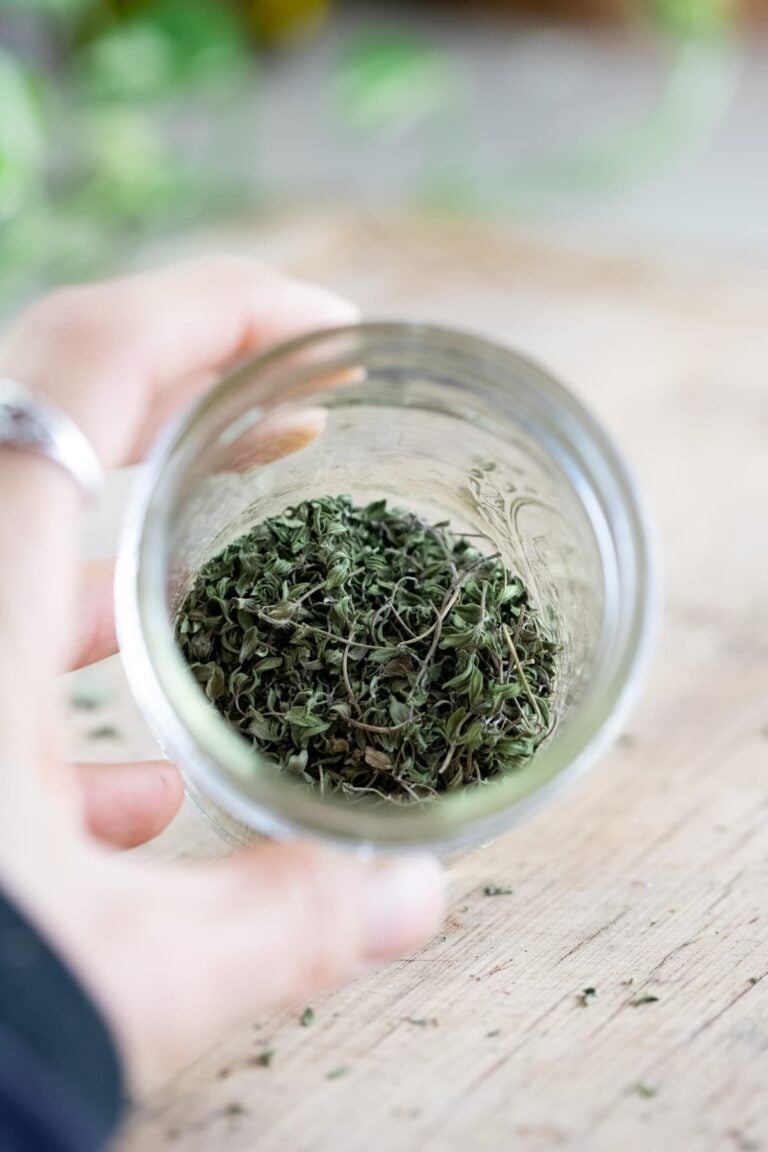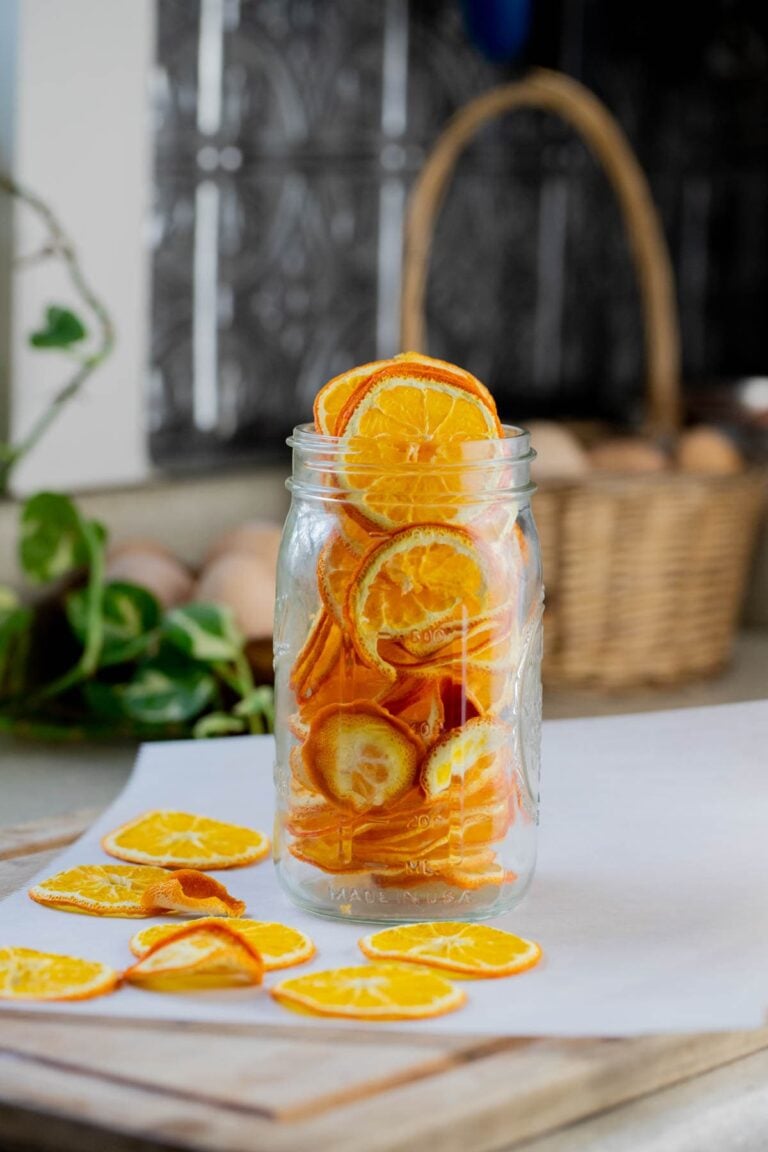Dehydrating Parsley
This post may contain affiliate links, view our disclosure policy for details.
Dehydrating parsley is very easy and a great way to preserve parsley. Dehydrated parsley is easy to add to many dishes and a great ingredient to have on the shelf.
I bought dry parsley from the store once, years ago, and that was the end of that. It tasted like nothing and therefore added no flavor to the few dishes I added it to. I checked that box and figured that parsley doesn’t dry very well… It just loses all of its flavor when it’s dried, or so I thought.
Last year, I decided to plant my parsley in a new bed. That bed happened to be mostly in the shade and there isn’t much that I can plant there. But I know that parsley likes cool weather, and I also know that it gets too hot too fast for it here in the South so I figured, let’s plant it in the shade and see how it does.
Dehydrating Parsley…
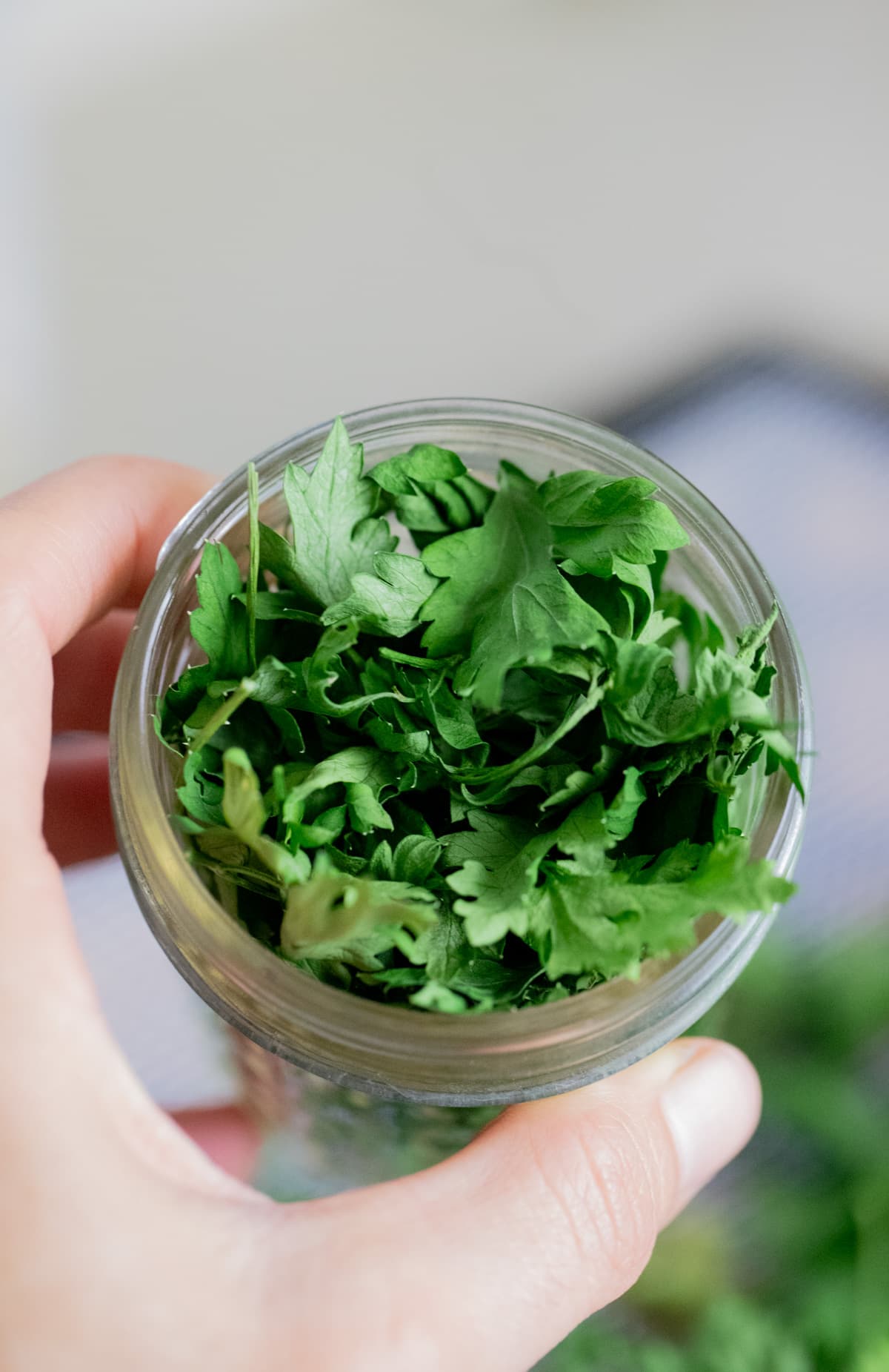
It did so so well in that spot that I ended up with a ton of parsley! In fact, I still have a couple of plants growing in that same spot from those plants that I planted last year (you can see them here). Anyway, I had to figure out what to do with all that parsley and decided to try to dry it. Well, well… turns out that if you dry parsley that doesn’t have any flavor to begin with, it won’t have any flavor when it’s dried.
But if you start with parsley that is at its peak, thick and flavorful… Well, that’s how it’s going to dry as well. The parsley that I dried from the garden is delicious! It’s so easy to use over the winter, I have it in a big jar on the shelf and simply add it to anything.
Reasons For Drying Parsley…
- Preserving the flavor – you can, of course, dry parsley that you bought at the store, but I only do this with parsley that I grow in the garden. It has so much more flavor! I harvest it in the morning hours, after a cool night, and dehydrate it right away.
- Easy to travel with – do you like camping? We camp every summer and packing dry parsley is as easy as packing salt. Camping or hiking food can be a bit flavorless at times so dry parsley is always welcome.
- Preserving for long-term storage – just another way to preserve your garden parsley and keep it at room temperature.
- Saves time – many dishes call for parsley. When you have it ready, dry, and on the shelf, it’s super easy to throw it into anything and saves you the time of removing the stems and chopping it when you make dinner.

Ingredients…
- Parsley – preferably freshly picked from the garden!
Kitchen Tools…
- Knife – if you want to chop your parsley leaves.
- Cutting board
- Dehydrator – I am using a nice dehydrator that allows me to control the temperature and produces a better end result. If you don’t have one of those, you can still dehydrate parsley in the oven (if your oven can work at a low enough temperature…) or in a cheap (no temperature control) dehydrator. More on this in the FAQ section below.
- Airtight storage container (I use jars)
How to Dehydrate Parsley…
Step one – prep the parsley. If you need to, wash your parsley. Then, make sure to dry it well. Next, remove the stems (you can dehydrate the stems if you like to, however, they have a different texture than the leaves so I’d recommend separating them). If you’d like to, give the leaves a rough chop.
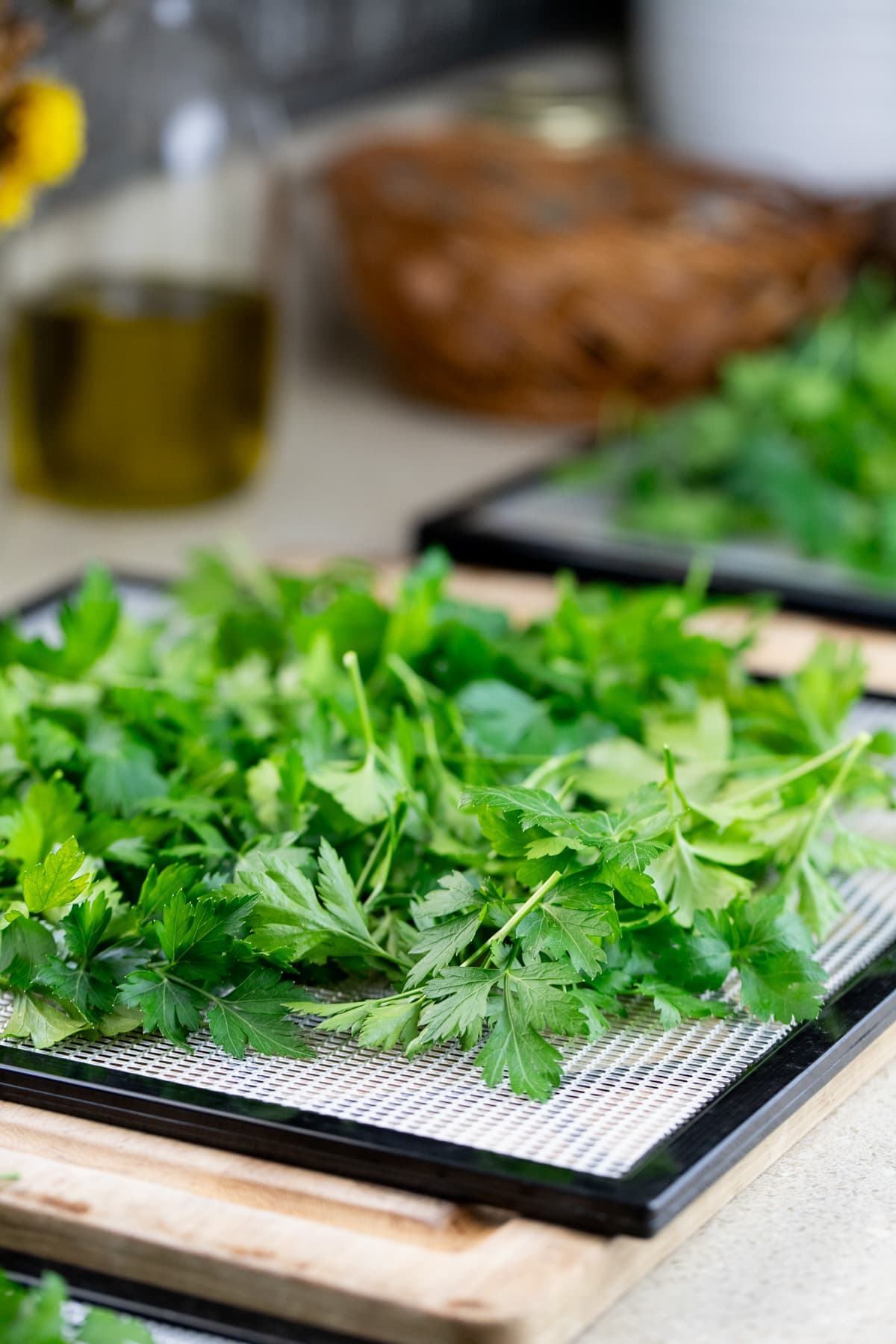

Step two – add to the dehydrator. Set the parsley leaves on the trays of the dehydrator in one layer.

Step three – dehydrate. Place the trays in the dehydrator and dehydrate at 95 degrees F for about 8 to 12 hours. After 8 hours, check the leaves. If they aren’t completely dry, keep dehydrating for another hour or two. Then check again. If they still aren’t dry, dehydrate for another hour or until they are completely dry.

How to Store Dry Parsley…
Once the parsley is dry, remove it from the dehydrator, let the leaves cool for a few minutes, and then transfer it to an air-tight container. You can vacuum seal the leaves or use zip-lock bags, however, in my opinion, jars with two-piece lids work best for storage and are beautiful on the shelf!
How to Use Dry Parsley…
Usually, if we are dehydrating orange slices or strawberry slices, for example, I’ll have a few different ideas in this section on how to use the dried food. However, when it comes to parsley it’s pretty simple. Set the jar of dried parsley on your spice shelf and use it to spice any dish. If a dish calls for parsley, simply add a few dried leaves. Here are a few dishes that will benefit from the addition of dehydrated parsley…
- Israeli Bean Soup Recipe (use the dry parsley as a garnish)
- Middle Eastern Chicken and Rice (add it with the rice. You can also add dry mushrooms).
- Classic Mediterranean Stuffed Peppers (add it in the stuffing)
- Southwest Chicken Chilli (or any other kind of chili! Add dehydrated carrots as well).
- Healthy Shakshuka Recipe (use it as garnish)
- Lentil Patties Recipe – use it instead of the fresh parsley, it will rehydrate easily.
How to Make and Use Parsley Powder…
One of the greatest things about dehydrated food is that you can turn it into powder. To make parsley powder, place the dry parsley in a coffee grinder and grind it until you get a powder. Store your powder in jars at room temperature and use it as seasoning. You can also mix it with salt to make parsley salt or add it to a mixed vegetable powder.
Frequently Asked Questions…
Yes but… Drying foods in a proper dehydrator where you can control the temperature produces a better result and preserves the nutrition better, however, if you don’t have a dehydrator, you can follow the same prep instructions, line a baking sheet with parchment paper, turn your oven to its lowest temperature, and dehydrate your parsley this way. The thing with parsley is… the leaves are very thin and they can burn easily. Hopefully, your oven’s lowest temperature is low enough to dry the parsley and not burn it but I suggest you check the leaves frequently.
Yes you can. If you are planning to make powder with all of your parsley, you can just place the stems and the leaves on the trays of the dehydrator and dry the whole thing. However, you might want to use your dry parsley as a garnish or in another way that isn’t a powder, in this case, I recommend separating the leaves from the stems and drying them separately since they have different textures.
The cheaper Presto dehydrator is very popular and you can find it at any Walmart or online. It runs at a temperature of 165 degrees F and there is no way to control the temperature. Yes, you can use this kind of dehydrator to dry parsley. Again, for best results, we want to process parsley at a temperature of 95 degrees F but a higher temperature will work as well. Drying time will probably be shorter, around 6-8 hours or so.
Mmmm… not really. Once you dry it there is no reason to rehydrate it. Just add it to whatever dish you’d like and it will rehydrate from the moisture that is in that dish since the leaves are so thin.
If you are a beginner when it comes to dehydrating food, if you are a gardener with a ton of parsley, or if you simply found yourself with a ton of parsley and want to preserve it in some way, dehydrating parsley is very easy! Again, I mainly do this with parsley that I grow, but of course, you can dehydrate parsley from the store as well.
More Dehydrating Tutorials…
- Dehydrating Garlic Scapes
- Dehydrating Beets
- How to Dry Cayenne Peppers
- How to Dry Rosemary
- How to Dry Thyme
- How to Dry Oregano
- How to Dehydrate Mushrooms

Dehydrating Parsley
Dehydrating parsley is an easy way to preserve it. Follow the steps below to dry parsley so you can use it to season many dishes.
Ingredients
- Fresh parsley
Instructions
- If you need to, wash your parsley. Then, make sure to dry it well. Next, remove the stems (you can dehydrate the stems if you like to, however, they have a different texture than the leaves so I’d recommend separating them). If you’d like to, give the leaves a rough chop.
- Set the parsley leaves on the trays of the dehydrator in one layer.
- Place the trays in the dehydrator and dehydrate at 95 degrees F for about 8 to 12 hours. After 8 hours, check the leaves. If they aren’t completely dry, keep dehydrating for another hour or two. Then check again. If they still aren’t dry, dehydrate for another hour or until they are completely dry.
- Once the parsley is dry, remove it from the dehydrator, let the leaves cool for a few minutes, and then transfer it to an air-tight container. You can vacuum seal the leaves or use zip-lock bags, however, in my opinion, jars with two-piece lids work best for storage and are beautiful on the shelf!
Notes
Frequently Asked Questions...
- Can I dehydrate parsley in the oven?
Yes but… Drying foods in a proper dehydrator where you can control the temperature produces a better result and preserves the nutrition better, however, if you don’t have a dehydrator, you can follow the same prep instructions, line a baking sheet with parchment paper, turn your oven to its lowest temperature, and dehydrate your parsley this way. The thing with parsley is… the leaves are very thin and they can burn easily. Hopefully, your oven’s lowest temperature is low enough to dry the parsley and not burn it but I suggest you check the leaves frequently. - Can I dehydrate the stems?
Yes, you can. If you are planning to make powder with all of your parsley, you can just place the stems and the leaves on the trays of the dehydrator and dry the whole thing. However, you might want to use your dry parsley as a garnish or in another way that isn’t a powder, in this case, I recommend separating the leaves from the stems and drying them separately since they have different textures. - I can’t control the temperature on my dehydrator, can I still use it?
The cheaper Presto dehydrator is very popular and you can find it at any Walmart or online. It runs at a temperature of 165 degrees F and there is no way to control the temperature. Yes, you can use this kind of dehydrator to dry parsley. Again, for best results, we want to process parsley at a temperature of 95 degrees F but a higher temperature will work as well. Drying time will probably be shorter, around 6-8 hours or so. - Can I rehydrate parsley?
Mmmm… not really. Once you dry it there is no reason to rehydrate it. Just add it to whatever dish you’d like and it will rehydrate from the moisture that is in that dish since the leaves are so thin.
Nutrition Information:
Yield: 1 Serving Size: 1Amount Per Serving: Calories: 1Total Fat: 0gSaturated Fat: 0gTrans Fat: 0gUnsaturated Fat: 0gCholesterol: 0mgSodium: 2mgCarbohydrates: 0gFiber: 0gSugar: 0gProtein: 0g



